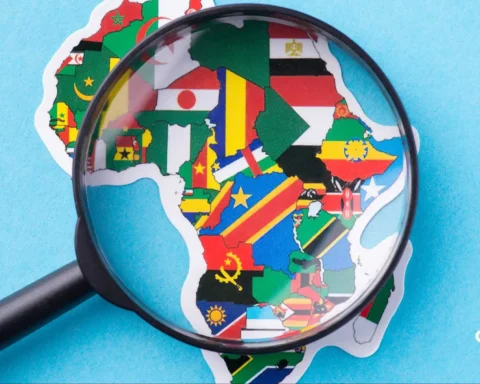She travels solo, fearless and free, charting her own path through cobblestone streets, mountain trails, and bustling markets. She travels in vibrant women-only groups, laughing, sharing stories, and building bonds that last a lifetime. The global Indian woman traveller is rewriting the rules of adventure, independence, and connection. No longer waiting for permission, she’s grabbing her passport and exploring the world on her own terms.
Whether it’s a solo city escape to Paris or a wild jungle trek with a crew of like-minded women, every journey is a bold statement of self-love and empowerment. These travellers are not just ticking off destinations; they’re creating communities, redefining freedom, and turning travel into a powerful act of independence.
If you think travel is just about the places, think again; this is about the woman who dares to go there.
Join us in this exploration.
Table of Contents
When the Travel Bug Bites
In recent years, Indian travel narratives have shifted from family vacations and business trips to highlight the emergence of global Indian women travellers. These women, characterized by their confidence, financial independence, and social awareness, are broadening their personal experiences while also impacting the global travel industry’s economics.

The travel bug ignites when curiosity aligns with courage, prompting Indian women to embark on transformative journeys. Whether traveling solo or in women’s groups, they seek self-discovery and move beyond traditional roles. Each adventure builds resilience, cultivates friendships, and fosters an appreciation for diverse cultures, resulting in a lifelong passion for empowerment and exploration.
Global Indian Women Travellers: Redefining Independence and Global Spend
The most striking transformation lies in motivation and autonomy. Earlier, travel among Indian women was closely tied to family responsibilities or social obligations: children’s education, family holidays, or accompanying spouses on work trips. Today, the picture looks radically different. Solo and small-group women globe-trotters have emerged as one of the fastest-growing segments in India’s outbound tourism sector.
With rising disposable incomes, improved safety infrastructure, and digital access to planning tools, Indian women across metropolitan cities and even Tier-II towns now plan international holidays independently. They research itineraries, compare airfares, and book boutique stays on their own terms.

The idea of traveling for self-discovery, recreation, learning, or meaningful experiences is no longer a privilege; it’s a lifestyle shift.
According to data from online platforms such as Booking.com and Thomas Cook India, the share of women in international trip bookings has grown steadily, crossing 35–40 percent in 2024. The new-age traveler from Bengaluru, Mumbai, or Gurugram may choose a wellness retreat in Bali, a culinary trail in Italy, or a hiking escape in New Zealand – all reflecting how travel has become an expression of independence rather than dependence.
Economic Empowerment Meets Experiential Travel
This surge is closely tied to India’s changing workforce composition. Urban India has witnessed a steady increase in educated and financially empowered women professionals, entrepreneurs, and freelancers who view travel not as a luxury but as an investment in self-growth. The phenomenon is further strengthened by the digital economy, where women working remotely or running online businesses integrate travel into their lifestyle.
Moreover, the Indian government’s focus on women’s safety and digital literacy, alongside fintech innovation, has given women travellers additional confidence. With secure mobile banking, e-wallets, GPS-enabled devices, and global health insurance access, navigating foreign lands now feels safer and easier.
Crucially, global Indian women travelers are not just spending on flights and hotels. Their spending patterns span multiple lifestyle categories: fashion, wellness, gourmet dining, adventure sports, and local cultural experiences. The shift is toward personalization and authenticity rather than standardized tourism. This preference aligns with global trends where experiential travel, sustainability, and cultural immersion are the new currencies of wanderlust.

Diaspora Connections and Cultural Curiosity
Indian-origin women in the diaspora are also redefining global travel in nuanced ways. Many seek journeys that reconnect them with their ancestral roots, tracing heritage villages in Punjab, temple corridors in Tamil Nadu, or textile clusters in Gujarat. Simultaneously, diaspora entrepreneurs and influencers are curating travel experiences that blend business networking with empowerment, such as women-led retreats in the UAE, heritage tours in Sri Lanka, or digital nomad circuits spanning Southeast Asia and Europe.
| Country/Region | Absolute Female VFR Count Change (2020–2025) | Relative Female VFR Growth (%) |
| Japan | +1.2 million | +18% |
| Australia | +0.9 million | +15% |
| Greece | +0.7 million | +14% |
| India | +2.5 million | +20% |
| US (Inbound VFR) | +1.8 million | +12% |
| Asia-Pacific Region | +5 million (aggregate) | +22.6% (highest regional growth) |
| Europe (Aggregate) | +3 million | +10% |
This cross-pollination of cultures has strengthened the identity of the “global Indian woman.” She is equally at ease navigating airports in Amsterdam and bazaars in Jaipur, is fluent in multicultural exchange, and is deeply aware of sustainability values. As she travels, she brings with her not only currency but also culture, spreading the soft power of Indian identity across continents.
Visiting Friends and Relatives (VFR)
Visiting Friends and Relatives (VFR) travel by women plays a significant role in Indian travel patterns, with many women travelling to reconnect with family and cultural roots. This form of travel blends emotional ties with leisure, where women often take the lead in planning trips for family reunions, weddings, and festivals. VFR trips provide opportunities to strengthen relationships while exploring heritage, making them both meaningful and motivational for Indian women travellers in 2025.

Between 2020 and 2025, VFR travel among women transformed significantly due to pandemic-related emotional needs for reconnection. As restrictions eased, more women led trips, combining family visits with leisure and cultural experiences – factors such as financial independence and enhanced safety enabled solo or women-only group travel. Moreover, technology and digital tools facilitated the organization of these journeys, highlighting VFR travel as a means for women to uphold social bonds and heritage while enjoying empowerment and adventure.
Safety and Social Media as Catalysts
Social media has amplified this movement in unprecedented ways. Platforms like Instagram and YouTube have created powerful micro-communities where women share itineraries, safety tips, and travel hacks. Influencers such as Shivya Nath and Radhika Nomllers have popularized responsible travel narratives, inspiring young women to travel solo while respecting local environments and communities.

Moreover, specialized women-centric travel startups, such as The Wow Club, Gutsy Women Travel, and Tripoto’s exclusive women’s tours, have created ecosystems of trust and support. These companies curate women-only groups, coordinate on-ground security arrangements, and design itineraries that seamlessly blend adventure with cultural depth. The focus on authenticity, camaraderie, and safety has made global exploration more accessible than ever.
The Global Spending Power of Indian Women
Economically, the rise of Indian women globetrotters is not just a sociocultural statement but a substantial financial force. Outbound travel expenditure from India exceeded USD 45 billion in 2024, and women are estimated to account for nearly one-third of that volume. Their spending extends beyond tourism, spilling into retail, luxury, education, healthcare, and sustainable travel.
Luxury brands and travel economies have taken notice. From Parisian boutiques offering India-specific experiences to spas in Bali customizing Ayurvedic packages, global merchants are evolving to cater to Indian women travellers’ preferences. Flight routes from India to destinations like Vietnam, Mauritius, and Greece have seen a surge in female solo travellers, indicative of diversification in both geography and ambition.

Workcations and creative sabbaticals have also become visible markers of this trend. Many mid-career professionals now blend conferences with cultural immersion or wellness retreats abroad. This blending of business and leisure -“bleisure travel” – further amplifies women’s economic influence, as they spend on both professional engagement and personal enrichment.
Redefining Global Narratives of Freedom
Beyond numbers and spending power, the rise of global Indian women travellers represents a deeper redefinition of freedom. It challenges long-held stereotypes about Indian women’s mobility and social roles. Today, a global Indian woman books her own ticket, chooses her comfort level, and curates stories that resonate with empowerment rather than permission.
Her travel experiences reflect a fusion of ambition and empathy – seeking both discovery and contribution. Be it volunteering at a rural school in Africa, attending an art residency in Europe, or running digital campaigns while traveling through Central America, these journeys embody a new global citizenship without borders.

At a symbolic level, each passport stamp tells a story of self-assurance, curiosity, and transformation. As she explores the world, she also reshapes how the world perceives India, modern, creative, and inclusive. The new-age global Indian woman traveller is both a citizen of the world and a custodian of her heritage, proving that travel can be a powerful instrument of economic empowerment and cultural diplomacy alike.

Conclusion
Caught the travel bug? Brace yourself! When wanderlust takes over, there’s no turning back. The side effects of travel fever are delightfully contagious: restlessness, insatiable curiosity, and a constant craving for new experiences that turn the world into your playground. For global Indian women travellers, the symptoms of severe wanderlust mean breaking free from old limits and embracing every journey as a bold act of independence and joy. This incurable travel addiction is a love story; an endless romance with discovery, freedom, and self-growth.
As each adventure unfolds, these women inspire millions, proving that to travel solo or together is to rewrite the story of what it means to be empowered. So, pack your bags with courage and optimism, because the travel bug promises not just destinations, but a lifetime of new beginnings and boundless possibilities.
At the Global Indian Network, we believe women travelers will endorse this statement.
| “As travelers, women don’t merely witness places; they help shape the zeitgeist of the times, carrying cultures, stories, and ideas across borders.” |









